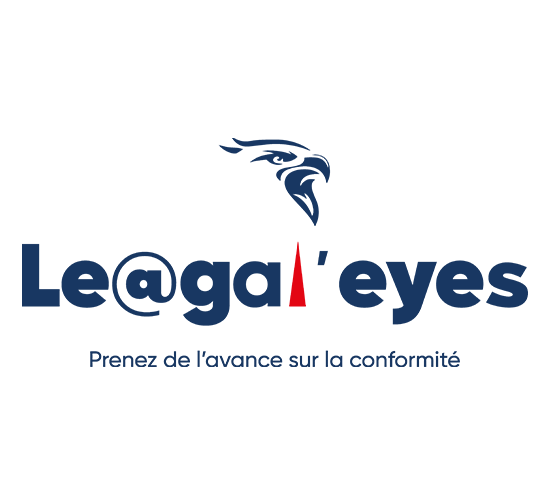Introduction
Regulatory monitoring and conformity assessments are not only requirements for obtaining certifications such as ISO, OHSAS, or MASE. They are also powerful levers for risk management in any organization.
Going beyond the simple legal requirements not only makes the company secure, but also creates added value and continuously improves internal processes. In this article, we will explore the importance of these practices, the implementation of a mapping of legal risks.
Regulatory Monitoring: A Pillar of Risk Management
Definition and Objectives
Regulatory monitoring is the process of identifying, monitoring and analyzing legislative and regulatory texts that impact the activity of a company. It aims to ensure compliance, anticipate changes, and inform strategic decisions.
Beyond Compliance
1. Risk Anticipation: By identifying and analyzing new laws and decisions of authorities including regulators, companies can anticipate potential impacts on their operations, enabling proactive measures to be taken.
2. Competitive Advantage: Companies that stay abreast of legal developments can adapt their strategies and processes faster, giving them a competitive advantage.
3. Reputation and Trust: Continued compliance strengthens the reputation of the company and the trust of stakeholders, including customers, investors and regulators.
Practical Implementation
1. Source Identification: Use of legal databases, subscriptions to trade journals, participation in professional networks and use of technology watch tools. It is also important to enlist the services of seasoned professionals to effectively achieve the vision.
2. Responsibility and Communication: It is essential to appoint a team dedicated to regulatory monitoring and to regularly communicate updates to the departments concerned.
Compliance Assessments: Verification and Action
Importance of Compliance Assessments
Regular assessments ensure that the company complies with legal and regulatory obligations, detect non-conformities and take the necessary corrective measures.
They are essential to:
1. Identifying Gaps: Identifying gaps between company practices and legal requirements.
2. Take Corrective Action: Take action to address non-conformities and prevent their recurrence.
3. Continuous Improvement: Use of evaluation results to improve internal processes.
Evaluation Process
1. Internal and External Audit: Conducting audits by internal teams and independent third parties for objective evaluation.
2. Documentation and Monitoring: Maintenance of compliance records and follow-up of corrective actions.
Mapping Legal Risks: A Strategic Approach
Definition
Legal risk mapping is a systematic method to identify, analyze and assess the legal risks to which a company is exposed. It makes it possible to prioritize risks and develop strategies to manage them.
Importance of Risk Mapping
1. Global View of Risks: Provides an overview of risks, facilitating their proactive management.
2. Resource Allocation: Allocates resources effectively based on identified risks.
3. Strengthening Governance: Improves governance by integrating risk management into decision-making processes.
Steps in the Risk Mapping
1. Risk Identification: Identification of risks from various sources, including audits, feedback and regulatory monitoring.
2. Risk Assessment: Analysis of the probability and impact of identified risks. It is also essential to carry out risk weighing on the basis of matrices based on relevant criteria such as gravity and control.
3. Risk Handling: Development of strategies to deal with risks, including avoidance, reduction, transfer and acceptance of risks.
Some examples on the importance of the company’s commitment to risk management
In France, the Labour Code requires employers to guarantee the health and safety of workers (Articles L.4121-1 et seq.). Case law, such as the Court of Cassation’s judgment of 28 June 2012 (no. 11-10.937), reinforces this obligation by emphasizing the employer’s responsibility in matters of safety.
In Senegal, the Labour Code and the Environment Code also impose strict health, safety and environmental obligations. Environmental protection also imposes environmental compliance obligations on companies.
In Côte d'Ivoire, the Labour Code (Law No. 2015-532 of 20 July 2015) and the Environmental Code require companies to comply with health, safety and environmental regulations. The recent reform of the Labour Code in 2015 has strengthened employers' obligations to protect workers.
Conclusion
The implementation of regulatory monitoring and conformity assessments goes beyond simply obtaining certifications. It is an essential lever for risk management, allowing companies to protect themselves against sanctions, protect their reputation, and create added value.
By integrating a legal risk mapping approach, companies can adopt a proactive and strategic approach to risk management, ensuring continuous compliance and continuous improvement of their internal processes. The examples show that this approach is applicable and beneficial in various jurisdictions, reinforcing the importance of rigorous monitoring and evaluation for any organization.
For personalized support in the implementation of these practices, companies can turn to specialized professionals or set up competent teams to provide tailor-made solutions for compliance and legal risk management.





